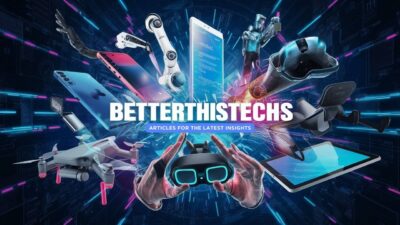In today’s fast-paced digital world, one of the sub beings which is at the very heart of this evolution is ‘Auractive‘ – a term which was originated by combining the words ‘aura’ (a particular atmosphere or quality) and ‘interactive’. This unique approach aims to generate experiences that stimulate users’ emotions and thoughts and therefore go beyond interaction styles.
This is different from traditional interaction paradigms and is more of creating experiences for the users that will engage their minds and hearts.
What is Auractive
Auractive is a tool that simplifies tasks and business processes, providing hassle-free integration with existing systems. This tool helps businesses optimize their operations.
Key Features of Auractive
User interface
Auractive offers the platform with a simple, easy-to-understand interface for all users. All of Auractive’s features are not only simple, but accessible to anyone, from an IT professional to an amateur.
Functionality
Auractive takes a big hand when it comes to functionality. It includes a large number of tools and features that are easily adaptable to any type of business. Auractive provides services in almost every aspect of business, from project management to CRM.
compatibility
An important aspect of Auractive worth mentioning is its compatibility. It is highly compatible with other software and technology solutions so that companies don’t have to switch to Oractive and continue using their preferred platforms and applications but still have access to all of the platform’s functionality.
Key Technologies Enabling Auractive Experiences
Auractive experiences, considered virtual shared environments, rely on quite sophisticated technology. Here are the key technologies enabling these experiences:
Virtual Reality (VR) and Augmented Reality (AR)
VR: Represents interactive virtual worlds where a computer user can interact with a computer-simulated environment. Oculus Rift, HTC Vive, and PlayStation VR are some of the popular VR platforms.
AR: combines digital and physical reality by displaying interactive content on top of physical objects. ARKit (Apple) and ARCore (Google) are examples of leading platforms for AR development.
Mixed Reality (MR)
Hybrid Reality: Joining both VR and AR aspects where digital and physical objects can interact live. An example of a famous MR device is Microsoft’s HoloLens.
Haptic Feedback
Measures and controls temperature and other types of touch feedback for users in virtual environments. This technology will be used to enhance realism and immersion in VR and AR. Some companies like HaptX and Ultraleap are leading the way in introducing and developing this application.
Spatial Audio
Creates a spatial audio effect in that it changes the perceived direction and position of the sound source in virtual space. It enhances the presence and reality of what one sees. Spatial audio is used with technologies such as Dolby Atmos or binaural audio.
Artificial Intelligence (AI) and Machine Learning (ML)
Automatically controls the auractive experience and determines how the environment and virtual characters react to the user. AI/ML where it is applied to real-time analytics; NLP; and Behavioral modeling.
Computer Vision
Allow devices to identify and understand images and make sense of the physical world which is very important for AR/MR. The models in this include object recognition, face recognition, and motion detection. OpenCV and Google are some of the major companies that are responsible for providing computer vision technology.
5G Connectivity
Includes the dense bandwidth and low latency necessary for smooth auractive experiences, especially for cloud-based VR/AR use cases. 5G allows for video and image transmission in a higher resolution and speeds up the process of information exchange.
Cloud Computing
it is suitable for backing up databases and power-hungry environments with an auractive character. AWS, Google Cloud, and Azure provide reliable infrastructure and compute resources, serverless offerings, storage, databases, and other services needed for rendering and managing large datasets.
3D Graphics and Rendering
Creates realistic and detailed digital environments used in computer games. New technology graphics engines such as Unreal Engine and Unity are well suited for the development of VR and AR experiences.
Sensors and Motion Tracking:
Full-body immersive devices with sensing and motion tracking technologies record the movements of users and map them into the digital space. This includes accelerometers, gyroscopes, and depth cameras.
Wearable Technology
Such as VR headsets, AR glasses, and haptic suits, are particular hardware used to enhance interaction with digital environments. For instance, Meta offers the Quest series, while Microsoft has the HoloLens.
These technologies have the potential to generate brilliant, interactive, and immersive auractive experiences to users and change the way users consume digital content.
How to take advantage of Auractive?
Advanced features: You can subscribe to its more advanced features to receive all the benefits from Auractive. Read through automation workflows, extensive analytics, and integration tools to get into real business change.
best practice: It is important to note that some practices can help you maximize its use. Optimize the platform to change it often; train your team and find out all these innovations so that you get the most out of Auractive.
Future development of Auractive
Auractive’s future is bright. The development team is currently adding new features that are designed to make the platform better and more user-friendly. The major new features planned include Artificial Intelligence analysis, additional security, and interoperability capabilities.
User testimonials
Users praise Auractive. Here are some of their words:
- Jane Doe, CEO, of Tech Innovators: “Auractive has transformed our workflow. It’s incredibly easy to use and has saved us a lot of time.”
- John Smith, Project Manager, Creative Solutions: “Hassle-free integration with our existing tools is a game-changer. Auractive is the best platform we’ve ever used.”
Conclusion
Auractive means the way of perceiving and approaching the world of the interactions in a way that is radically different from what we have been doing traditionally. It expands the idea of spaces to include both physical and digital and enriches the many opportunities on offer. The effects of Auractive are significant and have a great impact not only on individuals but also on society wherein people tend to be more sociable and empathetic. It feels like innovation is the fuel that is powering the new world order and Auractive is a welcoming beacon towards it!





